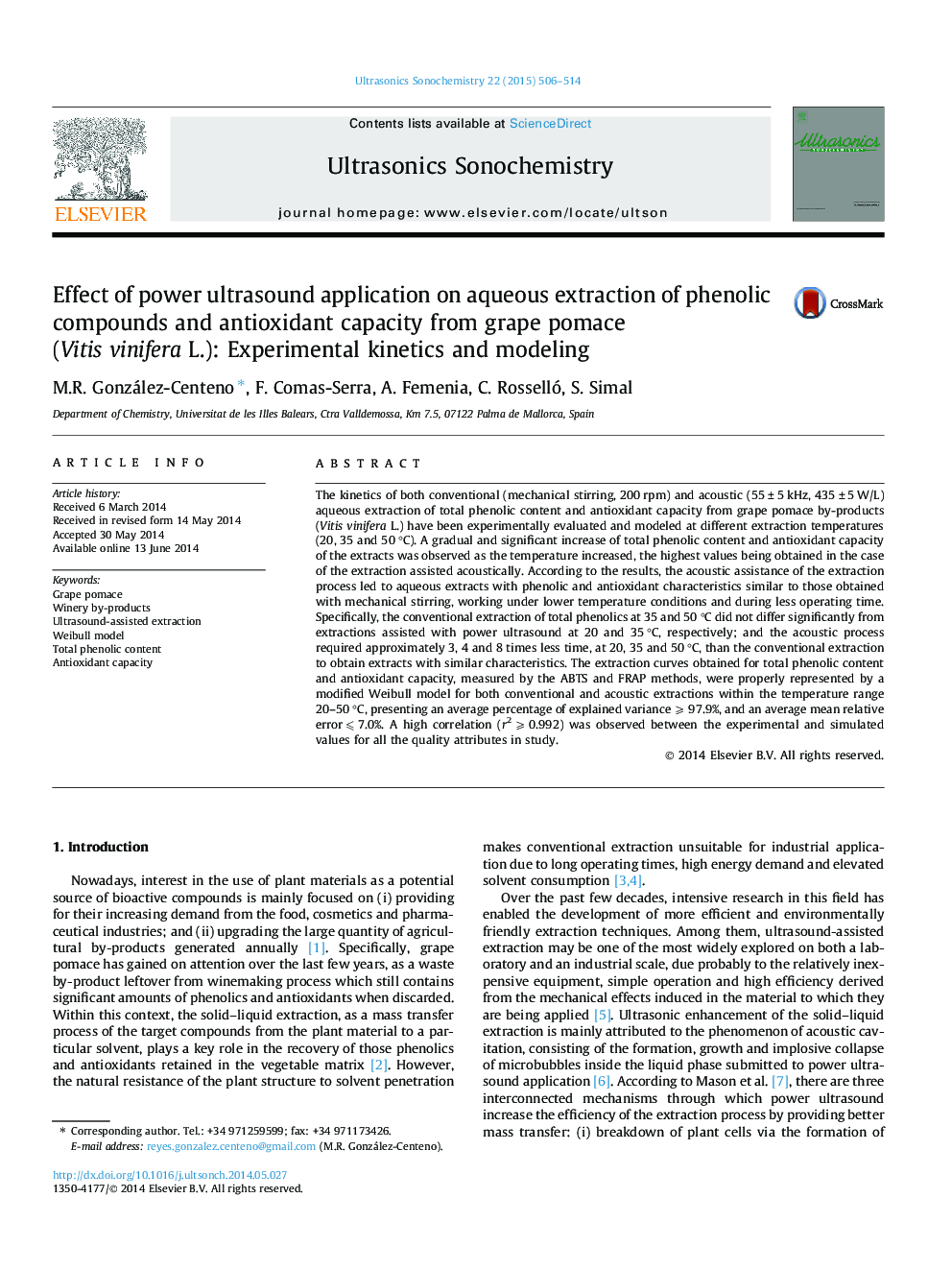| کد مقاله | کد نشریه | سال انتشار | مقاله انگلیسی | نسخه تمام متن |
|---|---|---|---|---|
| 1269675 | 1496882 | 2015 | 9 صفحه PDF | دانلود رایگان |

• Acoustic/conventional aqueous extractions of grape pomace phenolics were compared.
• Acoustic runs led to similar extracts as conventional at lower temperature/less time.
• Ultrasonic assistance improves extraction rates compared to conventional process.
• In acoustic runs, extraction was not only faster but also accelerated over time.
• All extraction curves were properly represented by Weibull model (VAR ⩾ 98%, MRE ⩽ 7%).
The kinetics of both conventional (mechanical stirring, 200 rpm) and acoustic (55 ± 5 kHz, 435 ± 5 W/L) aqueous extraction of total phenolic content and antioxidant capacity from grape pomace by-products (Vitis vinifera L.) have been experimentally evaluated and modeled at different extraction temperatures (20, 35 and 50 °C). A gradual and significant increase of total phenolic content and antioxidant capacity of the extracts was observed as the temperature increased, the highest values being obtained in the case of the extraction assisted acoustically. According to the results, the acoustic assistance of the extraction process led to aqueous extracts with phenolic and antioxidant characteristics similar to those obtained with mechanical stirring, working under lower temperature conditions and during less operating time. Specifically, the conventional extraction of total phenolics at 35 and 50 °C did not differ significantly from extractions assisted with power ultrasound at 20 and 35 °C, respectively; and the acoustic process required approximately 3, 4 and 8 times less time, at 20, 35 and 50 °C, than the conventional extraction to obtain extracts with similar characteristics. The extraction curves obtained for total phenolic content and antioxidant capacity, measured by the ABTS and FRAP methods, were properly represented by a modified Weibull model for both conventional and acoustic extractions within the temperature range 20–50 °C, presenting an average percentage of explained variance ⩾ 97.9%, and an average mean relative error ⩽ 7.0%. A high correlation (r2 ⩾ 0.992) was observed between the experimental and simulated values for all the quality attributes in study.
Journal: Ultrasonics Sonochemistry - Volume 22, January 2015, Pages 506–514